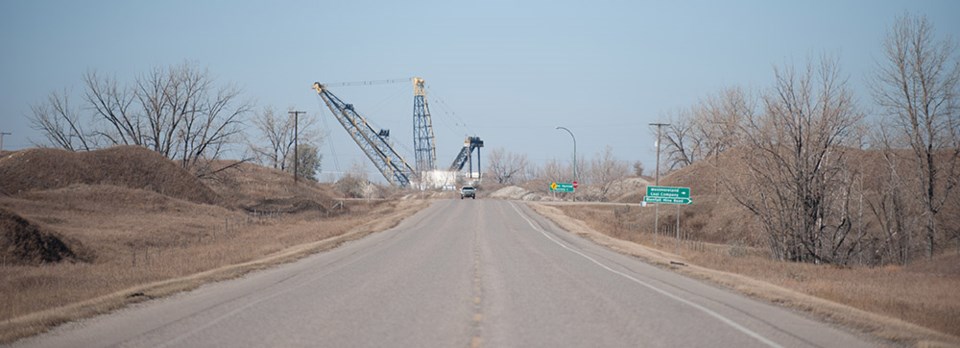When there’s a press conference between multiple leaders of equivalent rank, it’s a good bet the person who makes the initial announcement and does most of the talking is probably the leader.
If that’s the case, then Saskatchewan Premier Scott Moe may have taken the first step in leading this province, and Canada, into a nuclear power renaissance.
If it does happen, and right now, that’s a very big if, it would mean a wholesale change in our power generation system. It would be the birth of a new industry, nuclear power generation, and death of two others; coal-fired, and eventually, natural gas-fired power generation.
On the environmental side, many people have been saying for years the only way to truly reduce or eliminate greenhouse gas emissions in baseload power production is by going wholesale into nuclear. But no jurisdiction that I know of in the developed world seems to be willing to do that. Indeed, two of the most nuclear-reliant nations – Japan and German, have pulled away from it in the wake of the Fukushima disaster. The developing world, however, is building nukes all over.
This enormous shift would require continual focus, not just in Saskatchewan, but in Ontario and New Brunswick, through many years and, presumably, changes in governing parties. If we’re halfway into building several of these facilities, and a new NDP government puts the brakes on it, if would mean fiscal disaster for this province. And if you think that can’t happen, it already has. In Ontario in 2010 and 2011, a Liberal government cancelled two natural gas power plants, already under construction – and they approved these plants in the first place!
It would also likely mean a change in the nature of our power grid. Instead of a small number of very large power plants, it could potentially mean a much more distributed system of smaller plants. Estevan and Coronach would likely each get multiple reactors adding up to hundreds of megawatts, making use of existing transmission lines.
But Moe also suggested these could be used in areas where diesel power generation is the norm. That means they would have to be some models incredibly small in scale for such applications, in the far north.
It also means that if an area like Yorkton, for instance, which has no power generation in the region, has demand growth, could see a small nuclear facility built. Having distributed power generation, placing your power sources close to your demand, means you lose less power due to line loss, the electrical resistance inherit it every wire and transmission line.
I don’t know what the life expectancy is of new combined-cycle natural gas power plants, but Moe hinted SMRs could replace both coal and natural gas power generation. We’re just finishing a brand new natural gas plant near Swift Current, and another will soon be built at Moose Jaw. North Battleford had two plants built there a little under a decade ago. Will these be stranded assets some day? Surely, they would be the last ones replaced by nuclear power. And in the meantime, we can’t go without them.
For Estevan, such a wholesale change would be something of blessing and a curse. The curse would be the loss of coal mining and coal-fired power, which directly employ at least 760 people. How many people SMRs would employ would be a function of how many units are placed here. But given these things aren’t very large, the number of people working with them would be a fraction of what are employed now in power generation and coal mining. But, and this is important, there would still be people working in it.
And those people would presumably make similar, or maybe even better wages, than what they are now.
If coal is indeed lost, this may be the best possible option. A consolation prize, if you will, but one that will last for generations.
And if coal is shut down, it will take some time, and a lot of work, to do the final cleanup. That would mean the eventual demolition of Boundary Dam, Shand and Poplar River power stations, as well as their surrounding sites. One would hope priority for those jobs would go to those affected by the coal shutdown. Similarly, as much as possible, any new facility construction job should see priority go to those affected by the coal phase out. This wouldn’t be long-term by any stretch, but it would provide some employment. It would also reduce costs, as those workers already live in these communities, as opposed to bringing people in.
Secondly, there’s a lot of unreclaimed mines in the area, both west and south of Bienfait. I’ve been told these have been left “for wildlife.” Some of those areas are being mined again, for deeper seams, especially south of Bienfait. But the area west of Bienfait sure isn’t. I would suggest that once the last plant shuts down, all unreclaimed sites should be fully remediated. That’s several years of dozer work, at minimum.
There should be a fair bit of carryover of power plant personnel from coal to nuclear.
The bottom line is this – because of Canada’s global commitments to reduce greenhouse gases, and a lack of wholesale adoption of carbon capture and storage – the days of coal seem to be numbered. The way the federal government has been moving on this, there not may be anything we can do to change that. Small nuclear reactors may be the lifeboat that both Estevan and Coronach need.
It may not what those communities want, but the alternative – losing their primary industries with nothing to replace them, is much worse.
Brian Zinchuk is editor of Pipeline News. He can be reached at brian.zinchuk@sasktel.net.



